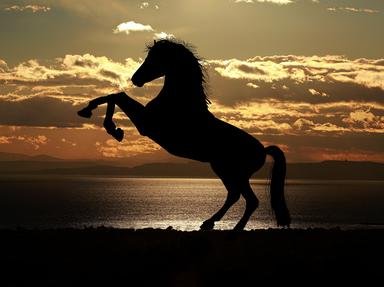Quiz Answer Key and Fun Facts
1. Which fictional TV and movie character rode a horse with the catchphrase "Hi ho Silver!"?
2. Movies: Whose breakout performance was in the role of Velvet Brown in the 1944 movie 'National Velvet'?
3. Literature: What was the name of the loyal, uncomplaining workhorse in George Orwell's novel 'Animal Farm'? His motto was "I will work harder".
4. History: Talking of Napoleon, what was the name of Napoleon Bonaparte's horse?
5. Legends: What was the name of the winged horse in Greek mythology?
6. Literature: What was the name of Don Quixote's horse?
7. History: what was the name of Alexander the Great's horse?
8. TV: What was the name of the famous horse who partnered Roy Rogers? Clue - it was also the name of the horse in Benny Hill's 1972 UK hit 'Ernie the Fastest Milkman in the West'.
9. Legends: In Greek mythology what were the creatures who were half men and half horse called?
10. Literature: In 'Gulliver's Travels' by Jonathan Swift, what were the race of intelligent horses called?
Source: Author
Mightybear
This quiz was reviewed by FunTrivia editor
agony before going online.
Any errors found in FunTrivia content are routinely corrected through our feedback system.

